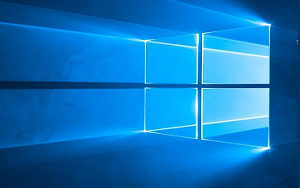Learn how to effectively manage and turn off notifications in Windows 11, ensuring a distraction-free computing experience. Explore the settings to customize your notification preferences for optimal productivity.
Windows 11, the latest operating system from Microsoft, brings a modern interface and a plethora of features to enhance user experience. However, notifications, while helpful, can sometimes become overwhelming. This article provides detailed instructions on how to turn off notifications in Windows 11, enabling you to focus on your tasks without interruptions.
Understanding Notifications in Windows 11
Notifications in Windows 11 alert users about updates, messages, and other important events. They appear in the Notification Center, located on the taskbar. While notifications are useful, too many can disrupt productivity. Windows 11 offers several ways to manage and customize these alerts.
Accessing Notification Settings
To begin managing your notifications, you need to access the notification settings in Windows 11. Follow these steps:
- Click on the Start menu located in the taskbar.
- Select Settings or press Win + I to open the Settings application.
- Navigate to System and then to Notifications & Actions.
Turning Off All Notifications
If you wish to disable all notifications, follow these steps:
- In the Notifications & Actions menu, locate the toggle switch under Notifications.
- Toggle the switch to Off to disable all notifications.
Note that turning off notifications will prevent all apps from sending you alerts, which might cause you to miss important updates.
Customizing Notifications for Specific Apps
Windows 11 allows for granular control over notifications for individual applications. Here's how to customize these settings:
- Within the Notifications & Actions settings, scroll to Get notifications from these senders.
- Review the list of apps and identify which ones you want to adjust.
- Toggle the switch next to each app to enable or disable notifications as preferred.
This option provides flexibility, allowing you to receive alerts from essential apps while silencing others.
Utilizing Focus Assist
Focus Assist in Windows 11 is designed to help you stay concentrated by limiting distractions. Here's how to use it:
- In the Settings app, navigate to System and select Focus Assist.
- Choose from three options: Off, Priority only, or Alarms only.
- Customize the Priority only list by adding apps or contacts that are allowed to interrupt you.
Focus Assist can be scheduled to activate during specific times, ensuring consistent productivity.
Managing Notification Banners and Sounds
For further customization, you can manage notification banners and sounds:
- In the Notifications & Actions settings, click on an app from the Get notifications from these senders list.
- Uncheck options for Show notification banners and Play a sound when a notification arrives as needed.
This ensures a quieter and less disruptive environment, even if notifications are enabled.
Setting Up Quiet Hours
Quiet Hours is a feature integrated with Focus Assist that silences notifications during predefined periods:
- Go to Focus Assist settings within the System menu.
- Select Automatic rules to configure quiet hours.
- Set your desired start and end times for quiet hours.
This feature is particularly useful during meetings or work sessions where focus is paramount.
Conclusion
Windows 11 offers robust options for managing notifications, ensuring that users can tailor their notification settings to suit their needs. Whether you need to disable all notifications or just silence specific apps, Windows 11's comprehensive notification settings provide the flexibility required to maintain productivity and minimize distractions. By utilizing features like Focus Assist and quiet hours, users can create a more focused and efficient computing environment.







